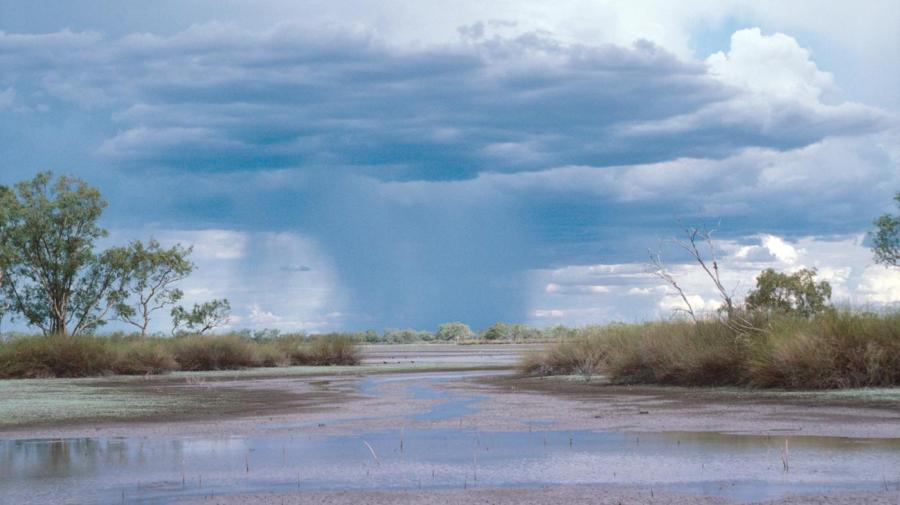What Is an Average Amount of Rainfall in Wetlands?

The average amount of rainfall in swamps and wetlands is 1750mm-2000mm of rain per year. Wetlands refer to areas where water is interrupted by small islands of land and a large number of plants.
Wetlands are known for supporting a considerable amount of plant life. Other words to describe similar regions include marshes, fens and bogs. These regions generally occur where temperatures are in the middle between hot and cold, and where vegetation grows quickly. In areas with shallow water, swamps and wetlands are prevalent. Wetlands are often in regions close to rivers or with flooding estuaries. As a result, wetlands also tend to have fresh water. There are many different types of animals that live in wetlands, such as fish and reptiles. Mangrove trees and aquatic plants depend on the rainfall from these areas. Insects also depend on rainfall in wetlands because they need to lay their eggs in pools of water. Dragonfly nymph are an example of insect larvae that enjoy the water. Frogs also often live in wetland areas, and they depend on the consistent rainfall both for habitat and also to support the insects that they eat in order to survive. Deforestation and pollution are factors that threaten wetlands because water spreads the toxins.





